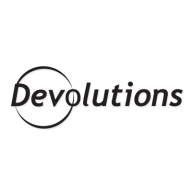


Devolutions Remote Desktop Manager and Claroty Platform are two prominent solutions in the remote access and cybersecurity domains, respectively. Devolutions Remote Desktop Manager receives higher scores for affordability and support, while Claroty Platform is praised for its robust features, making it worth the investment despite higher costs.
Features: Devolutions Remote Desktop Manager is valued for its comprehensive access control, password management, and security features. Claroty Platform is recognized for its extensive integration capabilities, threat detection, and monitoring functionalities. Claroty excels in features directly addressing industrial cybersecurity, distinguishing it from Devolutions.
Room for Improvement: Users indicate Devolutions Remote Desktop Manager could enhance its reporting tools and streamline its complexity. Claroty Platform could benefit from improving its user onboarding process and expanding documentation resources. Both products have distinct areas for growth, with Devolutions focusing on user experience and Claroty on support materials.
Ease of Deployment and Customer Service: Devolutions Remote Desktop Manager is praised for its relatively straightforward deployment process and responsive customer service. Claroty Platform, while feature-rich, can be more complex to deploy and may require more extensive training. Despite this, Claroty's customer service is considered effective once the initial learning curve is surpassed.
Pricing and ROI: Devolutions Remote Desktop Manager is noted for its competitive pricing and quick ROI, making it accessible to smaller enterprises. Claroty Platform, although more expensive, delivers significant ROI through its specialized cybersecurity features tailored to large industrial environments. Users find the investment in Claroty justified by the advanced protection it offers.



Microsoft Intune provides centralized management of mobile devices and applications, ensuring security, compliance, and productivity through integration with Microsoft services like Microsoft 365 and Azure Active Directory.
Organizations use Intune for managing mobile devices and applications, enhancing security and compliance across platforms. With features like single sign-on, conditional access, and zero-touch deployment via Autopilot, it facilitates efficient operations. Intune's scalability, easy enrollment, and capabilities such as remote wipe support diverse device management, offering robust data protection and efficient operation. Despite its features, improvement areas include reporting, compatibility with non-Microsoft devices, and better support for macOS and Linux devices.
What are the key features of Microsoft Intune?
What benefits should users look for in reviews?
In industries such as finance, healthcare, and education, Microsoft Intune is implemented to ensure secure and compliant device management. Companies leverage its capabilities to deploy security policies and manage both corporate-owned and BYOD environments, facilitating a unified approach to data protection and compliance.
The Claroty Platform is tailored for monitoring and securing industrial control systems. It offers deep visibility into OT networks, enabling effective anomaly detection and vulnerability assessments. Its user-friendly interface and robust reporting tools facilitate easy management and compliance, enhancing organizational efficiency and cybersecurity posture in industrial environments.
Remote Desktop Manager (RDM) centralizes all remote connections on a single, secure platform that can be shared across the entire team. With support for hundreds of integrated technologies—including multiple protocols and VPNs—RDM provides a comprehensive solution for managing remote access. It also features enterprise-grade password management tools, detailed access controls, and mobile apps that complement its desktop clients for Windows and Mac, and Linux.
RDM is designed to empower IT departments by enhancing security, speed, and productivity across the organization. By streamlining remote access management, it helps reduce inefficiencies, lower costs, and minimize risks, making it an essential tool for today’s IT environments.
We monitor all Remote Access reviews to prevent fraudulent reviews and keep review quality high. We do not post reviews by company employees or direct competitors. We validate each review for authenticity via cross-reference with LinkedIn, and personal follow-up with the reviewer when necessary.